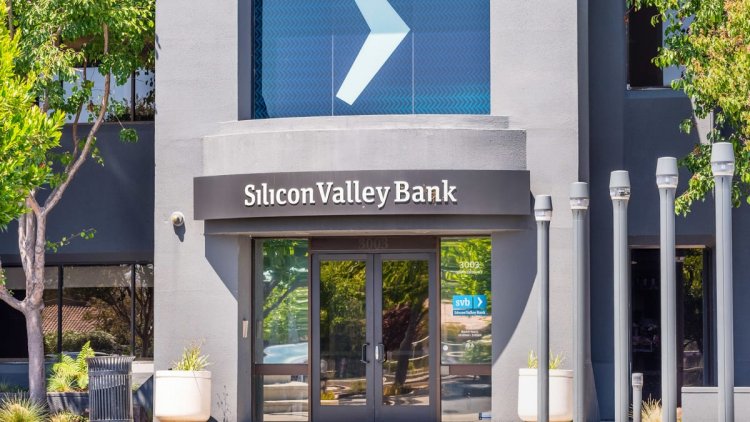SVB Collapse: Banks Rush to Borrow Money
Banks have borrowed a total of $164.9 billion from the Federal Reserve in recent days in the wake of the Silicon Valley Bank collapse.

Banks have borrowed a total of $164.9 billion from the Federal Reserve in recent days in the wake of the Silicon Valley Bank collapse.
Is it the fear that things are more serious than they appear or simply a precautionary measure?
While it is difficult to answer this question, one fact is clear: the banks are rushing to take advantage of the opportunities offered to them by the Federal Reserve in order to shore up their liquidity.
In the week ending March 15, commercial banks borrowed a total of $164.8 billion from the regulator, which serves as the last resort, according to data released on March 16.
This colossal sum suggests that liquidity problems may be more widespread than investors fear. The closure of Silicon Valley Bank (SVB) (SIVB) - Get Free Report by regulators on March 10 due to a bank run, followed by the closure also of Signature Bank in New York after its customers began withdrawing their funds two days later, suggested that the problem must be that of non diversified banks.
SVB had a large customer base of tech and healthcare startups and venture capital firms, while Signature Bank focused on the cryptocurrency industry.
A Liquidity Problem
But given the amount borrowed by banks the pressure on liquidity seems to be a problem for many financial institutions. In addition, it suggests that this liquidity problem is serious.
The money was borrowed through the two destinations of last resort offered since March 13 by the Fed: the discount window, which is the traditional liquidity backstop for banks, and the newly created Bank Term Funding Program (BTFP), whose purpose is to safeguard institutions impacted by the collapse of SVB.
The BTFP facility provides loans, of up to one year in length, to banks, savings associations, credit unions, and other eligible depository institutions, pledging U.S. Treasuries, agency debt, mortgage-backed securities and other qualifying assets as collateral.
These assets will be accepted at par value as collateral, which means at their original value regardless of the evolution of interest rates, the rise of which in recent months has reduced the value of long-term bonds purchased when rates were low.
In summary, the Fed does not want to find themselves in a situation they are forced to sell their bonds for big losses.
About $152.85 billion was borrowed by banks through the traditional discount window in the week ending March 15. This amount is a new record. The old all-time high dates back to the 2008 financial crisis, when banks borrowed up to $111 billion in a week.
About $11.94 billion was borrowed through the new credit facility, the Fed said. As is tradition, the central bank does not give the names of the banks that have rushed to its doors. The names are generally revealed two years later to avoid throwing a bank in the way.
First Republic Bank
These figures are not likely to reassure investors who fear the contagion of SVB. All eyes are on the regional banks, especially First Republic Bank (FRC) - Get Free Report. The San Francisco, Calif.-based bank received $30 billion in deposits from 11 banks on March 16. The major banks -- Bank of America, JPMorgan Chase, Wells Fargo and Citigroup -- participated in the rescue plan, each contributing $5 billion. Goldman Sachs and Morgan Stanley each contributed $2.5 billion.
"This show of support by a group of large banks is most welcome, and demonstrates the resilience of the banking system," the Treasury department said in a statement.
The question is whether this announcement will help stabilize First Republic Bank, whose shares have fallen by 70.2% since the setbacks of SVB. Very few details about this original plan have filtered out, which is likely to raise more questions. Which is unwelcome in view of the current climate of anxiety.
Regulators are trying by all means to restore confidence in the banking system. The Federal Deposit Insurance Corporation (FDIC), for example, took the extraordinary decision to guarantee all deposits of SVB and Signature Bank. This means that depositors with more than $250,000 in their accounts at both banks will receive all of their money. Ordinarily, the federal agency only guarantees deposits below $250,000.
What's Your Reaction?

























































